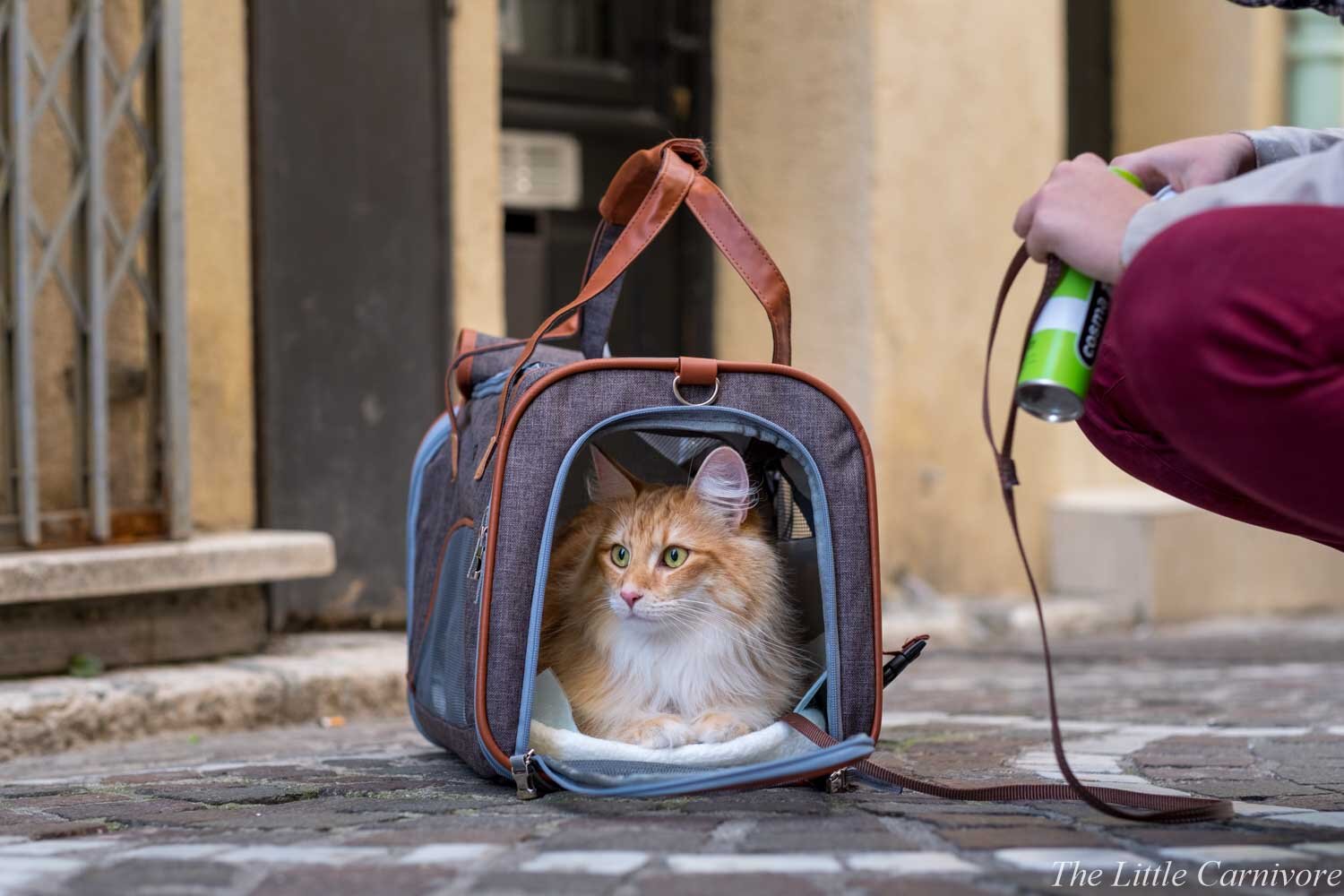How to teach your cat to walk on a leash?
The pictures of Néline outside on a leash always raise a lot of questions! It goes from “Why do you walk your cat on a leash?? It’s not a dog” to “How did you teach Néline to walk on a leash?”. I’ll answer those questions and more in this article.
Why?
First, why do I walk Néline on a leash? Spoiler: the answer is not to take nice pictures for Instagram. Néline is an indoor cat, meaning that she does not go freely outside. (I will explain why Néline is an indoor cat in a next article). In summer, she has access to our terrace when we can watch her, but that’s it. As Néline is very curious, going outside on a leash is a great opportunity for her to see something else than our apartment, while being secure. She really enjoys it and gets excited whenever we put her harness on. It’s important to know that not every cat will like it: some won’t get used to the leash, some others will be too scared of the outside world, some will just not be interested. Some cats will enjoy it so much, that they will meow at the door non-stop: be aware of this “risk”.
Now for how actually to walk your cat on a leash.
As for every new experience with a cat, it will be simpler if your cat is young. It’s not impossible if your cat is older, you will just need to be more patient. As an example, we started walking Néline when she was 5 months old. When you try out the tips in this guide, take some time at every step to observe your cat behavior. Stop if it seems stressed or scared.
First step: Harness
The first step is to buy the proper material: A leash and a harness. Collars are not recommended because of the risk of strangulating your cat or letting it escape.
The best types of harnesses are the ones in the form of an H. Some are very thin, some are bigger like a small vest. If your cat does not like a particular type, you may try another one.
After buying the harness, show it to your cat, so it can smell it and see that it’s not dangerous. You may let it in a visible place in your house for a day.
You can then start to try to put the harness on your cat. Start by a small (5 minutes) test, encourage your cat by giving it a reward, like a treat. You can also play with it to divert its attention.
Repeat with longer wearing times, until your cat gets totally comfortable and forgets that the harness is here.
Second step: Safe place
When your cat is comfortable with a harness, I advise you to start walking it in a safe environment. For example, safe environments could be a park or a garden: preferably not busy places, without any cars. Bring your cat in a carrier, open it and let your cat going out at its pace. If your cat does not go out the first time, but is curious it’s ok! This first experience will teach it, that it always ends up going safely back home. If your cat is scared and huddled up at the back of the carrier, going outside is maybe not the best for it.
Repeat this step until your cat is comfortable in a safe environment. When your cat starts walking, don’t pull the leash: just try to follow it!
The first time we did it with Néline, she was curious, but hesitating to go out, sometimes meowing. She did a few steps outside and then went back in the carrier.
The second time we did it she still hesitated, then went out carefully, and three minutes later she wanted to explore the whole park!
When we go out to a new place we always bring a carrier, so if she gets scared she has a safe place to take refuge in.
Last step
Finally, for the last part: how did we teach Néline to follow us? We use two techniques: the first one is to encourage her to come when she is called by rewarding her with treats. The second is to very gently apply a pressure with the leash when she wants to go in the wrong direction. Be very careful when using this technique as some cat will react very negatively to a restraint and will get on the defensive or try to escape from the harness! Do that only if your cat reacts appropriately, and never hurt your cat.
I also noticed, though I don’t know if it’s just the case for Néline, that she has a natural tendency to follow a path, like a sidewalk.
This imposes quite a few limitations on our walks: if Néline doesn’t want to go in the right direction, I will just take her in my arms. I also always let her smell everything she wants. Remember that walking a cat requires a lot of patience!
Another question that people ask me a lot is what do I do if there is a dog? Néline doesn’t particularly like dogs, and if she spots one walking far away, she will sit and carefully observe its moves. If a dog is coming close, like on the same sidewalk, I always take Néline in my arms as I can’t know if the dog is friendly or not.
Here are all my tips on how to walk your cat. Remember that you need to be patient, and that the most important part is that your cat enjoys it!


